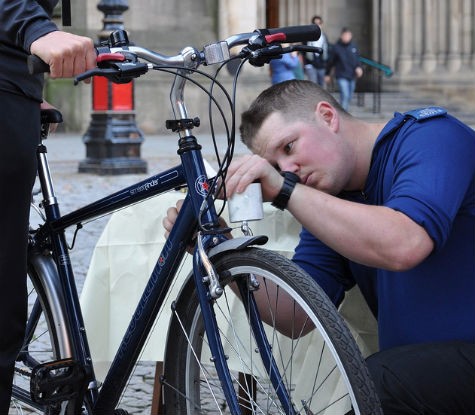Keeping your bike in great shape
Published 3 May 2011

Although this isn’t an all-encompassing bike maintenance vault, it does include what we think are the most important things to get right when checking and maintaining your bike. In other words, the essential ‘don't leave home without’ and ‘get me home’ knowledge. Obviously what you read here is not a substitute for the real thing. If you’d like to deepen your understanding, check out one of our bike maintenance workshops.
What equipment should you take?
These are the things you should never be without on a long ride (that’s any distance you'd really rather not walk).
- Spare tube
- Puncture kit
- Allen key set
- Pump
- Small change/mobile phone
- Taxi number.
How do you make sure your bike is safe to ride?
Even if you're not a highly trained mechanic, you can quickly check over you and your family's bikes to make sure they're safe to ride. Here's how:
- Apply both brakes firmly – they should stop the bike after moving through no more than half of the lever travel
- Check that the brake blocks line up correctly with the rim (not the tyre!) and are not excessively worn – if in doubt, replace them
- Make sure your brake cables are tightly secured at the brakes and aren’t frayed – if in doubt, have them replaced at a bike shop
- While you’re on the brakes, rock the bike back and forth. If you can feel play or looseness, either your brakes or headset are loose. If you’re not sure what to do, take the bike to a shop.
- Check that your handlebars are secure in the stem and the stem is secure in the front forks. Try to rotate the bars forward and backward and side to side. If there’s any movement, tighten the bolts securing the handlebars or stem.
- Check that both wheels are firmly attached to the frame by rocking them from side to side. Play in the wheels can mean one of two things – either the wheel is loose or there’s wear in the bearing. The former is more serious but both will require attention. Make sure that the wheel nuts or quick release is securely fastened – if the play persists, take it to a bike shop where they’ll adjust your wheel bearings.
- On smooth, flat ground, away from traffic, check that you can change easily from one gear to another and that the chain doesn't skip off the cogs. It can be really dangerous if you unship your chain in traffic. If the chain slips, get the bike to a shop to be checked over.
- If you’re going out at night or in poor visibility, make sure your lights are correctly attached and working properly.
If you’re unsure or wary about any aspect of your bike, take it to a quality bike shop for a service. Or if you’re the self-sufficient type (and most cyclists are), get yourself onto a bike maintenance workshop. You’ll learn valuable skills and be able to pass them on to friends and family.









